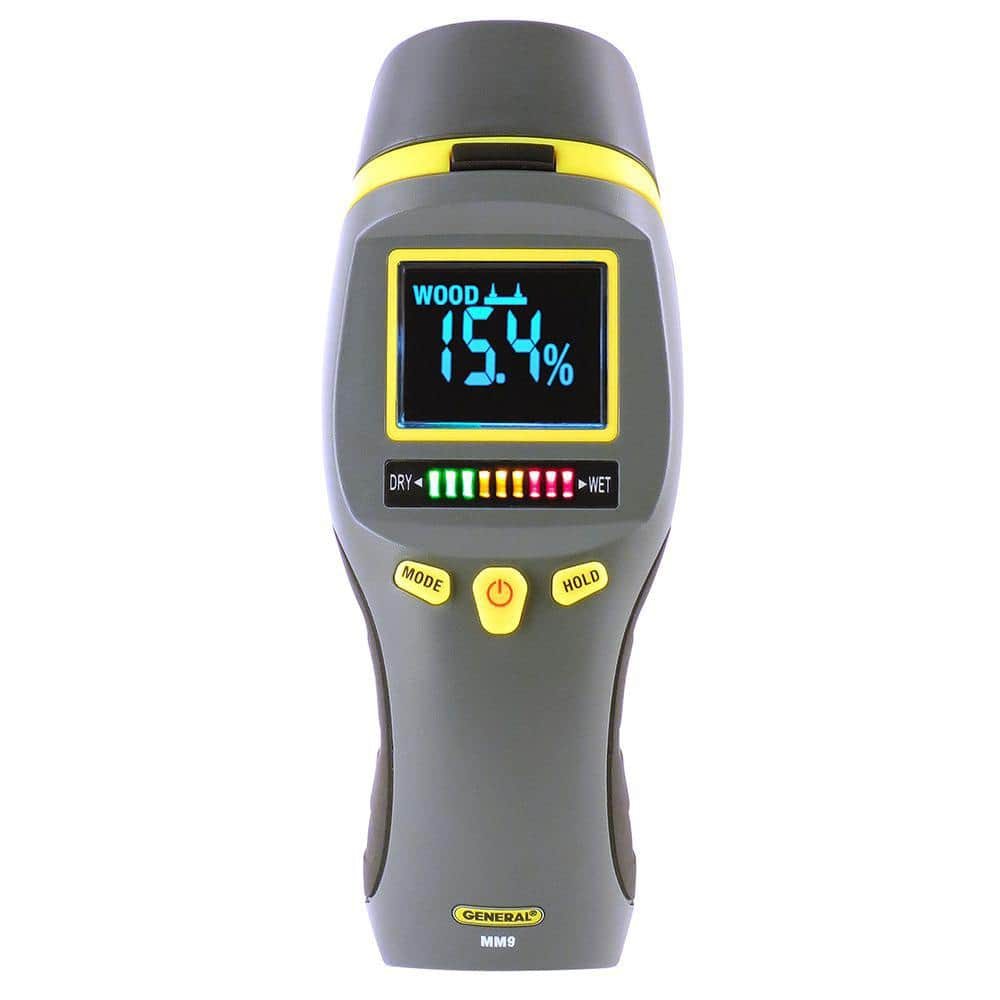The Ultimate Overview to Picking the Right Moisture Meter for Your Demands
The Ultimate Overview to Picking the Right Moisture Meter for Your Demands
Blog Article
Understanding the Significance of a Moisture Meter in Avoiding Mold And Mildew and Water Damage in your house
In the world of home upkeep, the existence of wetness can commonly be a silent yet powerful opponent, capable of causing pervasive mold development and insidious water damage if left unattended. Recognizing the importance of a dampness meter in this fight is not just an alternative yet a strategic requirement.

Importance of Dampness Discovery
Efficient moisture detection techniques are essential for securing properties and avoiding potential mold and mildew growth and water damage. Moisture can seep into numerous structure products, bring about architectural issues and health threats - Moisture Meter. By using a dampness meter, residential or commercial property proprietors can proactively determine areas vulnerable to excess moisture, enabling timely treatment and mitigation techniques
Wetness meters offer accurate readings of wetness levels in different materials such as timber, drywall, and concrete. This information helps in identifying areas of issue, even in hidden or hard-to-reach locations. Early discovery of dampness build-up allows timely fixings or adjustments to avoid more damage.

How Dampness Meters Work
Wetness meters play a critical role in the proactive recognition of excess dampness, assisting in the avoidance of possible mold and mildew growth and water damages by providing precise readings of moisture degrees in numerous building materials. These tools function based upon different concepts, depending on their type. Pin-type wetness meters, for instance, have 2 pins that permeate the product to determine the electric resistance between them. When moisture is existing, it enhances the material's conductivity, bring about a lower resistance analysis. Pinless dampness meters, on the other hand, use electro-magnetic sensors to check the material without creating damages. These sensors give off electro-magnetic signals that permeate the product and gauge the dielectric residential properties, indicating wetness content. Some advanced moisture meters incorporate both pin and pinless innovations for comprehensive wetness detection. Understanding exactly how moisture meters feature is essential for precise and prompt dampness level evaluations, making it possible for efficient preventative measures against mold and water damage.
Finding Early Caution Indicators
Upon initial examination of a home, identifying subtle signs of excess moisture ends up being critical in the early detection of prospective mold growth and water discover here damages. Water discolorations can signify leakages or infiltration, while peeling off paint or wallpaper might be an outcome of dampness compromising the adhesion of these materials to the surface. Furthermore, a boost in allergic reaction Web Site signs and symptoms or respiratory system problems amongst owners might recommend the visibility of mold due to excess wetness.


Preventing Mold Growth
Recognizing very early warning indicators of excess moisture within a home not only makes it possible for timely discovery of prospective mold and mildew growth and water damages however additionally serves as an aggressive step in protecting against the spreading of mold. To properly avoid mold and mildew development, it is important to address any kind of sources of wetness without delay.
In addition to attending to moisture resources, keeping indoor moisture degrees listed below 60% can considerably inhibit mold and mildew growth. Correct ventilation, appropriate insulation, and utilizing air conditioning unit or followers can assist manage interior moisture degrees. Checking moisture levels in locations susceptible to wetness, such as basements and crawl areas, utilizing a dampness meter can also help in very early detection of elevated wetness degrees and possible mold and mildew development. By taking proactive measures to stop excess wetness and mold growth, property owners can secure their residential or commercial property and indoor air high quality.
Benefits of Regular Surveillance
Routine monitoring of wetness degrees in a building can play a vital duty in preserving a healthy and balanced indoor atmosphere and protecting against potential mold and water damage. By regularly checking wetness degrees, home owners can spot any kind of problems without delay and take necessary actions to avoid mold and mildew growth and water damage.
Furthermore, regular surveillance permits house owners to track useful link patterns and patterns in moisture levels over time. Inevitably, the constant monitoring of dampness levels equips homeowners to shield their home, safeguard their health, and maintain the stability of their interior setting.
Final Thought
In conclusion, the usage of a dampness meter is vital in protecting against mold and water damage in homes. By spotting very early caution signs of wetness, home owners can take proactive steps to protect against mold growth and expensive fixings.
By utilizing a dampness meter, property owners can proactively recognize areas vulnerable to excess wetness, enabling for prompt intervention and reduction techniques.
Moisture meters provide accurate readings of moisture degrees in various products such as timber, drywall, and concrete.Dampness meters play a critical duty in the proactive identification of excess dampness, assisting in the avoidance of prospective mold growth and water damage by offering exact readings of wetness degrees in various building materials. Recognizing how moisture meters feature is important for accurate and prompt moisture level evaluations, allowing reliable preventative measures versus mold and water damage.
Monitoring wetness levels in locations vulnerable to wetness, such as cellars and crawl rooms, using a moisture meter can likewise help in early discovery of elevated moisture levels and potential mold and mildew development.
Report this page